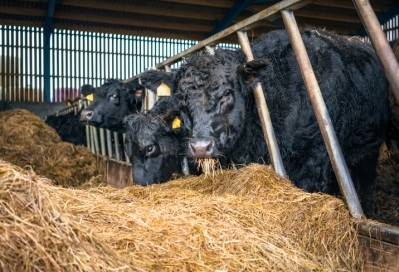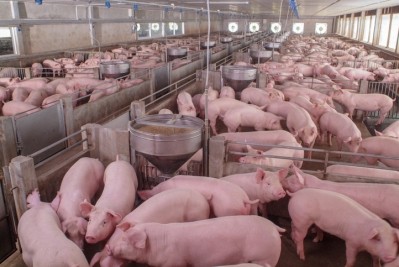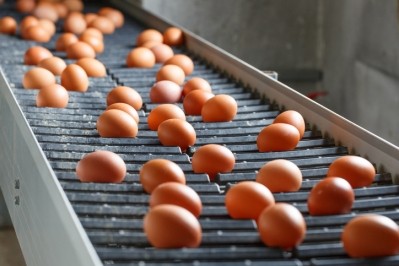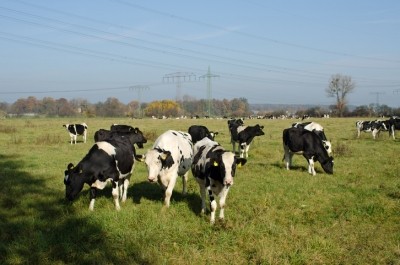Mineral absorption may predict feed efficiency in heifers
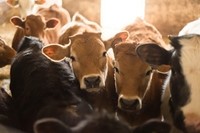
An international team of researchers based in Canada studied how pregnant cattle use macro-minerals in an examination of feed efficiency. They presented initial findings in the Journal of Dairy Science and added that more research is needed.
“Based on the hypothesis that differences in RFI [residual feed intake] could be related to mineral utilization, the objective of our study was to assess utilization of minerals and trace elements in pregnant heifers with distinct RFI,” said the researchers.
The group found results indicating that heifers noted for having better feed efficiency, also tended take in higher amounts of some trace minerals.
“Our study shows that whereas apparent absorption of Ca [calcium], P [phosphorus], Na [sodium], K [potassium], S [sulfur], Mg [magnesium], and Se [selenium] were similar for both groups of animals, absorption of Cu [copper], Zn [zinc], Co [cobalt], and Mn [manganese] were increased in low-RFI (more feed efficient) pregnant heifers, suggesting that these animals may be more efficient in addressing the greater demand for minerals that prevails during early gestation,” said the researchers. “However, the relationships observed do not elucidate a causal link between feed RFI and mineral apparent absorption in the gut said the researchers.”
“Therefore, further research is required to understand the association between feed efficiency and mineral utilization in cattle, and whether trace elements may be involved in specific mechanisms related to feed efficiency,” they said. “Our study also provides perspective for in-depth evaluation of mineral requirements in light of variation in feed efficiency of the bovine.”
Why RFI?
Residual feed intake shows the differences between cows in feed intake – above or below the average predicted levels, said the researchers. It is used as a sensitive and precise measure to demonstrate feed efficiency.
Animals with improved efficiency eat less than others and have a negative or lower RFI, they said. It can be measured independently of production traits and size and could be used to improve cattle.
“Genetic selection based on RFI may result in substantial reductions in costs of production, manure nitrogen, phosphorus excretion, and methane emissions by livestock (Herd et al., 2003; Hegarty et al., 2007; Basarab et al., 2013; Knapp et al., 2014),” they said. Previous studies have linked some biochemical and physiological traits with RFI, they added.
However, information is thin exploring a link between RFI and mineral utilization, said the researchers.
Minerals and trace elements are important for different physiological functions and performance, they said. Mineral imbalance alters cattle health and can damage fetal development.
Experiment details
In the initial stage of the two-part experiment, feed intake, body weight and body composition traits were monitored in 36 heifers for a 37 week period starting after weaning at about 8.3 months of age, said the researchers.
Body weight and composition were checked throughout the study and individual feed intake was recorded for the final 84 days of the trial, they said. The residual feed intake (RFI) was calculated for each heifer.
After establishing the RFI, heifers were put into groups based on score – high or low RFI, said the researchers. A selection of 24 heifers was then run through a week-long indirect digestibility trial.
Heifers in the trial received a ration containing corn silage, haylage, and a mineral mix that included calcium, phosphorus, potassium, sodium, magnesium, sulfur, copper, iron, manganese, molybdenum (Mo), selenium, zinc and cobalt, they said.
Feed was offered twice daily and refusals were collected to establish feed input, they said. Fecal samples were collected twice daily and blood and liver samples were taken at the end of the study.
Samples were checked for trace minerals and micro-minerals, they said. Acid detergent lignin was used as a marker in the feed and blood and liver samples also were checked for mineral levels.
Results
Dry matter intake differed between cattle with high or low RFI, said the researchers. Dry matter digestion was similar and the uptake of iron, Mo and selenium was the same for both groups.
However, apparent absorption of copper, zinc and magnesium was higher in heifers with low RFI, or better feed efficiency, they said. “A tendency (P = 0.07) for differences was noted between groups in the apparent absorption of Co (Table 3), suggesting higher absorption of Co in low-RFI heifers,” they added.
Heifers with low RFI had a tendency to have increased absorption of Cu, Zn and Mn, they said. Uptake of Co also was higher and larger amounts of Se were found in their serum.
“Liver concentrations of Cu, Fe, Mn, Mo, Se, and Zn did not differ between low- and high-RFI heifers,” they said.
Source: Journal of Dairy Science
Title: Utilization of macrominerals and trace elements in pregnant heifers with distinct feed efficiencies
DOI: doi:10.3168/jds.2015-10796
Authors: R.S. Dias, Y.R. Montanholi, S. Lopez, B. Smith, S.P. Miller, J. France
